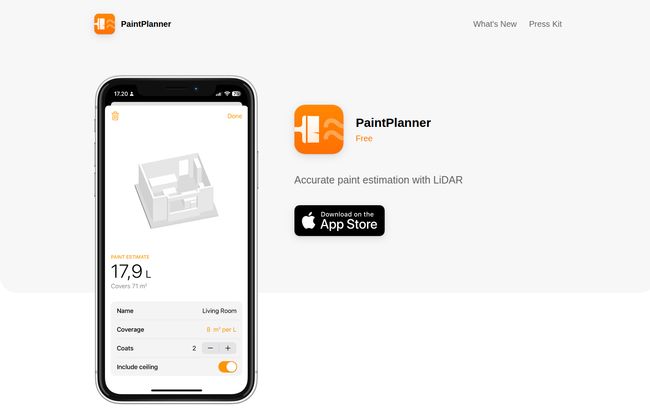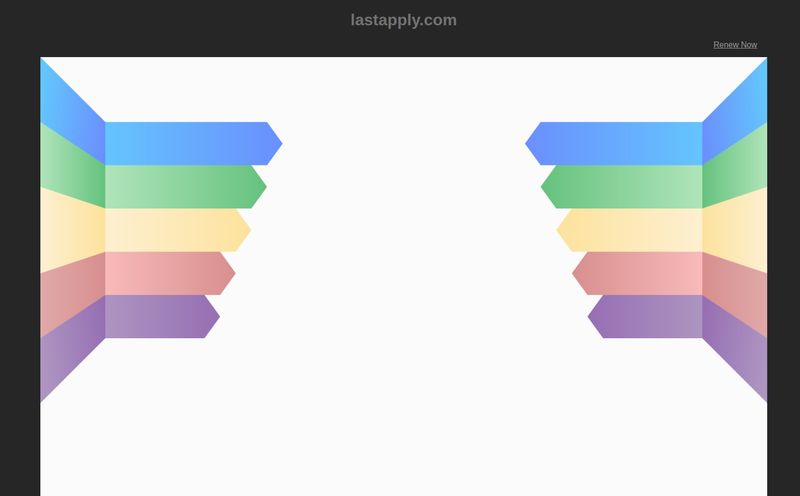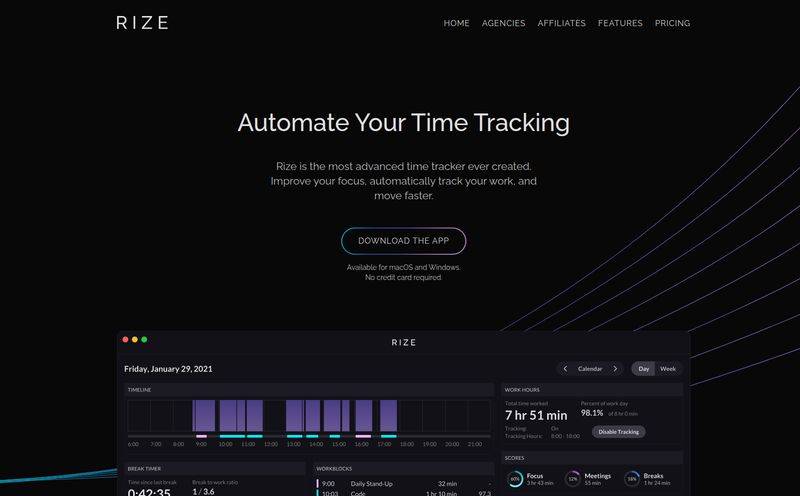Every single time I start a painting project, I play a little game I like to call “Paint Roulette.” Will I buy the exact right amount of paint? Or will I end up with three extra gallons of “Greige Mist” mocking me from the garage for the next decade? Worse, will I have to make a frantic, paint-splattered run to the hardware store at 8:45 PM for just one more quart?
It’s a tradition. A terrible, expensive tradition.
For years, the solution was a tangled mess of tape measures, scribbled notes on scrap wood, and some questionable mental math. But we live in the future now, right? We have phones in our pockets that are more powerful than the computers that sent people to the moon. Surely, there has to be a better way. Well, I stumbled across an app called PaintPlanner, and I have to say, it’s the closest thing to a magic wand for DIY painters I’ve ever seen.
What is PaintPlanner, Anyway?
In a nutshell, PaintPlanner is a free iOS app that uses your iPhone's built-in LiDAR scanner to measure your room and tell you precisely how much paint to buy. You just open the app, point your phone, and do a slow walk around the room. It feels a bit like you’re a character in a sci-fi movie scanning for lifeforms, but instead of aliens, you’re hunting for paintable surfaces.
It’s the brainchild of a developer named Emil Baehr out of Copenhagen, which gives it this cool, indie-dev vibe. It’s not made by a giant paint corporation trying to sell you their specific brand; it’s just a smart tool built to solve a really common problem.

Visit PaintPlanner
My First Impression: A Surprisingly Simple Experience
The first thing you’ll notice is the price tag: $0.00. That’s my favorite price. Once downloaded, the interface is refreshingly clean. No clutter, no confusing menus, no ads begging you to play a farming game. It’s just you, a big “scan” button, and the promise of an easier paint day.
The process itself is dead simple. You scan the room, and the app builds a 3D model right on your screen. It automatically detects the walls and even the ceiling if you want. It’s oddly satisfying to watch the digital version of your room come together. A real “welcome to the future” moment.
The Features That Actually Matter
An app can look pretty, but does it work? Here's what stood out to me.
The LiDAR Scanning Magic
This isn't just your phone's camera taking a picture. LiDAR (Light Detection and Ranging) actively sends out laser pulses to measure distance, creating an incredibly accurate 3D map of the space. It’s the same tech used in self-driving cars, and Apple started baking it into their “Pro” model iPhones starting with the iPhone 12 Pro. This is the secret sauce. It’s why you don’t need a tape measure. The app sees the room in three dimensions, which is a massive leap from the old “length times width” apps of the past.
Smart Subtraction of Doors and Windows
This is huge. I can’t tell you how many times I've done the math for a room and completely forgotten to subtract the giant sliding glass door or the two windows on the far wall. PaintPlanner does it for you. As it scans, it identifies those openings and automatically removes them from the total square footage. This single feature is what separates a vague guess from a genuinely useful estimate. It saves you from buying paint for surfaces you're... well, not going to paint.
Customizing Your Paint Project
Once the scan is done, you can tweak the details. You can input how many coats you plan to do (essential if you're making a dramatic color change, like painting over that “bold” red accent wall from 2011). You can also adjust the paint coverage. A can of Behr Marquee is going to cover a different amount of space than a budget can from the hardware store’s own brand. This little adjustment makes the final calculation that much more practical and tailored to your specific project.
The Good, The Bad, and The LiDAR-less
Okay, let's get down to it. No tool is perfect, right?
The good stuff is pretty obvious. It’s free, which is frankly wild for how useful it is. It saves a ton of time and eliminates the most tedious part of paint prep. And by giving you a more accurate number, it helps reduce paint waste. That's good for your bank account and a little bit better for the planet. A win-win.
But there are a couple of caveats. The biggest hurdle is the hardware requirement. You must have a LiDAR-equipped device. That means an iPhone 12 Pro, 13 Pro, 14 Pro, 15 Pro, or a recent iPad Pro. If you have a standard iPhone model, you’re out of luck for now. The second thing is that the accuracy, while very good, depends on your scan. If you have a super cluttered room or you wave your phone around like you’re trying to scare away a bat, the measurement might be slightly off. It’s a fantastic guide, but maybe buy the quart instead of the pint if you're right on the edge.
Who is PaintPlanner For?
- The Weekend DIY Warrior: This is the sweet spot. If you’re tackling a bedroom, a living room, or the whole main floor, this app is a no-brainer. It takes the guesswork out of the equation.
- Painters and Contractors: While they probably have their own trusted methods, I could see this being a slick tool for providing quick, on-the-spot estimates to clients. It just looks professional.
- Interior Designers & Real Estate Agents: A super handy tool for helping clients quickly budget for a cosmetic refresh. You can scan a room and give them a realistic paint cost in under a minute.
What About the Price? Oh, Wait...
So, what's the catch? Is there a pro version? A subscription? I actually went looking for a pricing page on their website to see what the upgrade path was. I clicked the link. And I got… a 404 error page. I have to respect that. It seems “Free” really does mean free. There are no in-app purchases, no hidden fees. It’s just a great, free utility.
Frequently Asked Questions about PaintPlanner
What devices work with PaintPlanner?
You'll need an iPhone or iPad with a LiDAR scanner. This includes the iPhone 12 Pro/Pro Max, iPhone 13 Pro/Pro Max, iPhone 14 Pro/Pro Max, iPhone 15 Pro/Pro Max, and various iPad Pro models released since 2020.
How accurate is the paint calculation?
It's surprisingly accurate for an app! The final number depends on how steady your scan is and how cluttered the room is. I’d treat it as a very strong estimate, much better than manual measuring for most people.
Can I save my paint estimates?
Yes, you can. The app allows you to name and save your projects, so you can keep track of the estimates for the living room, kitchen, and bedroom all separately.
Does it work for painting the outside of a house?
The app is primarily designed for interior rooms. LiDAR technology can struggle with the scale of a house exterior, direct sunlight, and complex outdoor textures. Best to stick to the indoors with this one.
Is PaintPlanner really, truly free?
Yep. As of this writing, it's 100% free on the App Store with no hidden costs.
Does it account for using a primer?
Not as a separate “primer” setting, but the workaround is simple. Just add an extra coat in the calculator to account for your primer layer. For example, if you plan to prime and then do two coats of color, set the app to calculate for 3 coats.
My Final Verdict: Should You Download It?
If you have a compatible iPhone or iPad, downloading PaintPlanner is one of the easiest decisions you’ll make for your next home project. It transforms a tedious chore into something quick, easy, and even a little bit fun. It's a perfect example of technology simply making life easier.
It’s not going to hold the paintbrush for you, and it won’t replace the decades of experience that a professional painter brings to the job. But for the rest of us just trying to get a weekend project done without buying way too much paint? It’s a brilliant little tool that punches way above its (non-existent) price tag. Stop guessing. Go grab it from the App Store.
Reference and Sources
- PaintPlanner on the App Store: https://apps.apple.com/us/app/paintplanner/id1576142344
- Developer Emil Baehr's GitHub: https://github.com/emilbaehr
- Apple's LiDAR Technology Explained: About LiDAR on iPad Pro and iPhone



